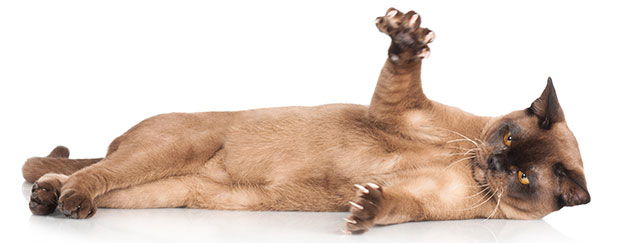
Although feline declawing surgery can be carried out with a scalpel, it’s often performed with a beam rather. This procedure is known as laser declawing. Owners who want to eliminate their cats’ claws sometimes go with laser declawing due to minimized bleeding and pain compared to the more standard procedure.
Laser Declawing Basics
Declawing involves the extraction of the last digits of felines’ toes, where their claws emerge. When veterinarians declaw cats, they get rid of the claws and the final digits while the felines are under general anesthesia. Veterinarians often use scalpel blades to make these amputations. This is not the case with laser declawing, however. With laser declawing, light beams sever and burn cats’ tissues all at once. This synchronised action is thought to encourage faster recovery.
Although laser declawing is associated with lots of advantages, there’s still little info relating to last outcomes of both basic and laser declawing techniques, aetapet.com informs. As far as results go, laser declawing is believed to trigger less tissue trauma, however.
Laser Declawing Advantages
Although laser declawing is normally costlier than basic declawing, many individuals choose it due to the fact that it provides several benefits. The lasers close the capillary and nerve endings which reduces bleeding. This closing not just minimizes bleeding, however it likewise decreases swelling, inflammation and pain. It likewise promotes quicker healing. Cats in some cases don’t even require bandages after laser declawing. While laser treatments decrease pain, they don’t totally eliminate it, however.
Healing Process
When veterinarians are through carrying out laser declawing treatments, they seal up the skin with adhesive and in some cases place post-operative plasters over it. They recommend pain medications to cats, which are administered over the course of a few days. Cats generally remain at their veterinary clinics overnight after laser declawing. In the early morning, their vets examine their condition and then observe all of their toes. Cats typically recover from laser feline declawing treatments no greater than a month after receiving them.
Suitable Candidates
Laser declawing treatments are ruled out to be proper for all felines. Veterinary centers may develop specific requirements for their declawing candidates. Felines are often allowed to receive laser declawing once they’re at least three months in age and weigh roughly 4 to 5 pounds. Veterinary experts often recommend declawing younger felines, although older animals can often get the treatments, too. Younger felines usually heal from declawing quicker.
